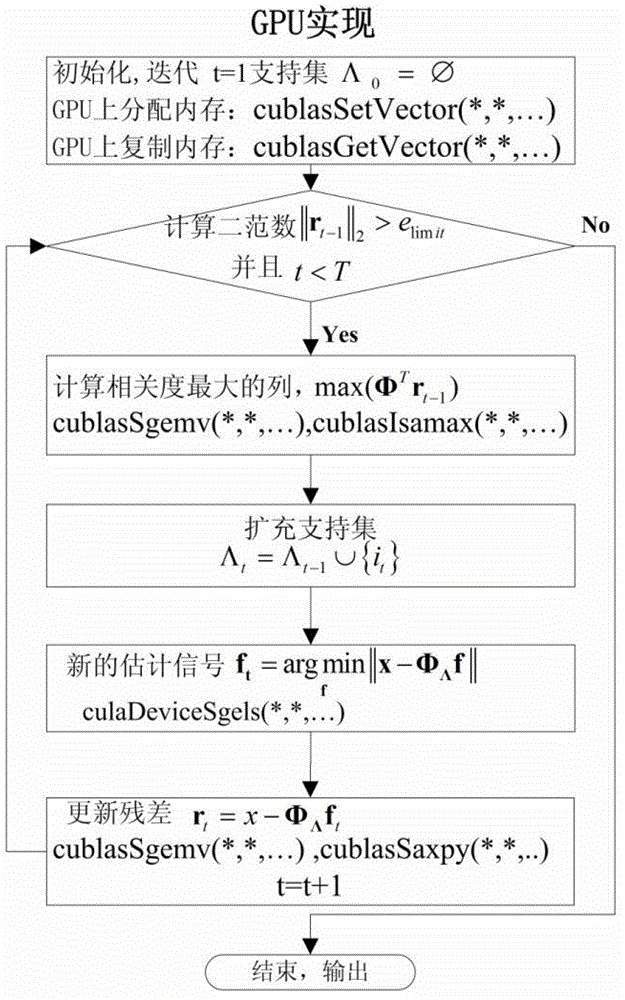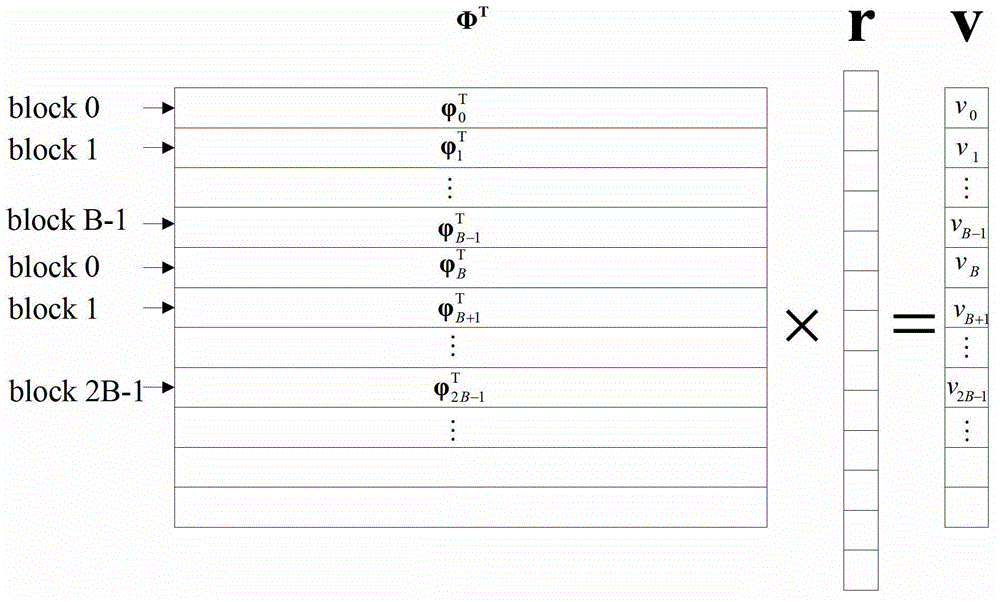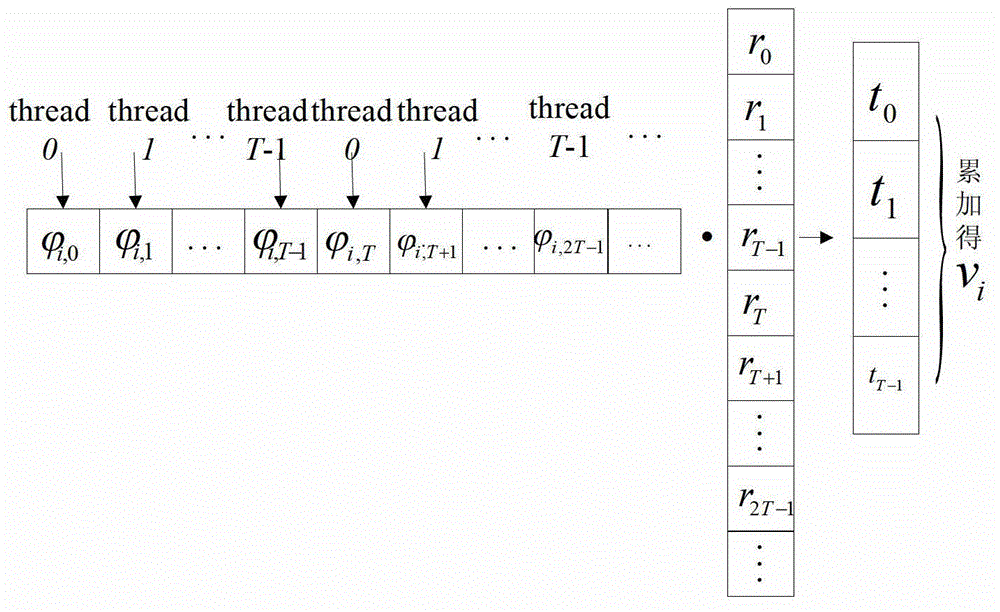Method for realizing sparse signal recovery on CPU (Central Processing Unit) based on OMP (Orthogonal Matching Pursuit) algorithm
A sparse signal and algorithm technology, applied in the field of signal processing, can solve the problems of slow convergence speed of MP algorithm and low probability of successful recovery, etc., and achieve the effect of significant acceleration performance of vector calculation, improved running speed, and fast convergence speed
- Summary
- Abstract
- Description
- Claims
- Application Information
AI Technical Summary
Problems solved by technology
Method used
Image
Examples
Embodiment Construction
[0038] The present invention will be described in further detail below in conjunction with the accompanying drawings and embodiments.
[0039] exist figure 1 In the flowchart of the parallel OMP algorithm, memory space needs to be allocated and initialized on the GPU first. Then carry out iterative operation, this part is divided into the following four steps:
[0040] Step 1, calculate the residual energy, and check whether to terminate the iteration.
[0041]Step 2: Calculate the correlation between the observation matrix and the vector in parallel, and then select the column index with the highest correlation in parallel.
[0042] Step 3: Add the column vector corresponding to the column index generated in the previous step to the base matrix.
[0043] Step 4, based on the expanded basis matrix, the least squares method is used to estimate the restoration result. Skip to step one.
[0044] After the iteration is terminated, the recovery result of the last iteration is ...
PUM
 Login to View More
Login to View More Abstract
Description
Claims
Application Information
 Login to View More
Login to View More - R&D
- Intellectual Property
- Life Sciences
- Materials
- Tech Scout
- Unparalleled Data Quality
- Higher Quality Content
- 60% Fewer Hallucinations
Browse by: Latest US Patents, China's latest patents, Technical Efficacy Thesaurus, Application Domain, Technology Topic, Popular Technical Reports.
© 2025 PatSnap. All rights reserved.Legal|Privacy policy|Modern Slavery Act Transparency Statement|Sitemap|About US| Contact US: help@patsnap.com



